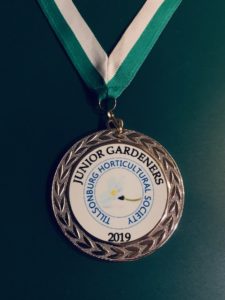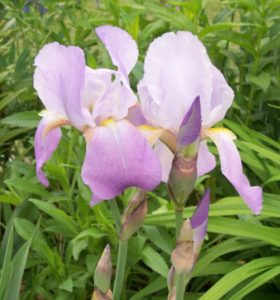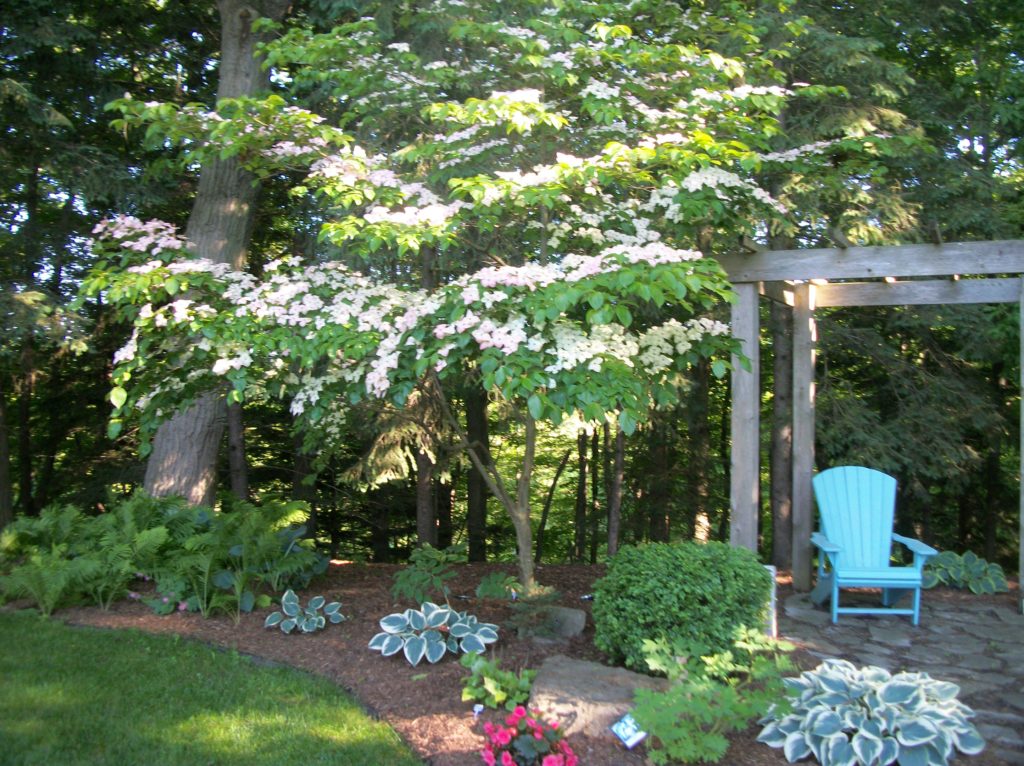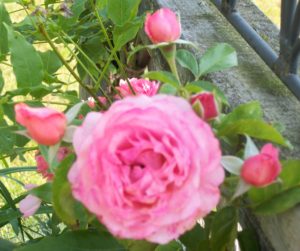It’s Still Just Dirt, The Tillsonburg News – March 2020
by Angela Lassam
Propagation is a way to expand your garden without too much cost but it takes patience and lots of time. It is a method where gardeners and horticulturists create new plants identical to an original form. There are several ways you can do this – stem cutting, layering and grafting.
Stem cutting is widely used on softwood shrubs and can be done in early spring when new growth has started. It is best done in the morning when the plant has its most moisture. You will need clean pruners or a sharp knife, pots prepared with potting soil or a good draining mix which has been well watered, a tool (pencil or small stick) to make a hole and some rooting hormone, either powder or liquid.
Take 3”- 4” pieces of plant cuttings just above a leaf node. Dip them in rooting hormone and carefully place each in a hole made with a stick or pencil. Press down the soil but do not water at this time. You will wash the rooting hormone into the soil if you do this. To aid growth you can top the pot with a plastic bag to retain the humidity needed. Place in a sunny location, wait and watch. This will take four to six weeks before roots get established. A good sign is when you see roots peaking out the bottom of the pot. Now is the time to plant into the garden.
Many plants are done this way in the spring. Some common ones are Hydrangea, Rose of Sharon, Dogwood, Honeysuckle, Mock Orange and Clematis. Fall cuttings can be prepared in the same way, often after leaf drop or late winter before budburst. Our usual garden shrubs are Weigela, Ninebark, Mulberry and Euonymus.
Layering is another way for some plants, mostly low growing type to be reproduced. It can be done at any time of the growing season. Lavender is a good one. Simply graze or rub the soft stem, bend it a little and pin into the soil or make a trench which will secure it better. Water often. It is a slow process but needs little care. If done early in the year there will be new plants to relocate after cutting from main plant in the fall. Cane berries are different as they require their tips to be buried 3”- 4” in the soil to regenerate. Strawberries are natural layering fruit as they produce a new plant on the end of a new growth called a runner. It naturally roots itself when the tip (new plant) touches the ground.
Grafting is done usually by horticulturalists and nurseries specializing in trees. Many trees purchased in nurseries are grafted types. The method used is taking a strong tree and attaching an often ornamental or flowering tree to the strong rootstock. Fruit trees that are more than one variety are produced this way.
Water rooting is a way anyone can experiment with even if you do not have a garden. Most indoor plants can be used to make new ones for gifts or to add to your own space. You simply need a warm sunny location for your glasses or jars. You need to take a tip 3 – 4” long, stripping off any leaves on the lower part that may reach the water. Fill a jar or glass half full of tepid water and cover the top with foil or paper. Punch several holes if a large top opening. Then you can place cuttings through the holes just into the water. Change the water every three to five days. Place in a sunny window and watch for the roots to form. When the roots are at least 2” long you can pot them up in potting soil and give as gifts or maybe for a plant sale!!
Perennial herbs will continue to grow in the winter in water giving you fresh herbs all year long. Prepare in the same way as stem cutting but place in water.
Succulents are unique to propagate as you cut the leaves from the main plant and leave them to dry off and scab over. Then place them on the top of a pot of well watered soil. It will take some time to show roots but they will form and reach for the soil that you have kept moist. You can cover with soil once the roots are well established. Once established in the soil they require little care and water. A big mistake is to overwater which causes root rot.
It is always worth the time taken to create new plants for your garden, friends and even for sale. Propagation is just another simple way to do this and enjoy the journey to the end when you see more blooms in your garden at very little cost – just time and patience.
The next monthly meeting for the Tillsonburg Horticultural Society scheduled for Tuesday April 7th @ 7:30 p.m. in the Senior Centre Auditorium, Tillsonburg Community Complex has been cancelled due to the Coronavirus. Watch for details of the May 5 meeting in The Tillsonburg news or look us up on the website www.tillsonburghortictural.ca and check out Facebook – tillsonburghorticultural




